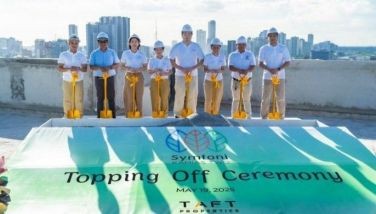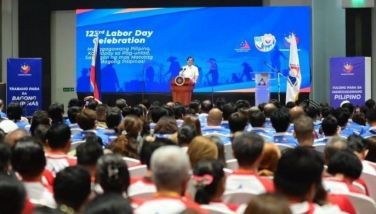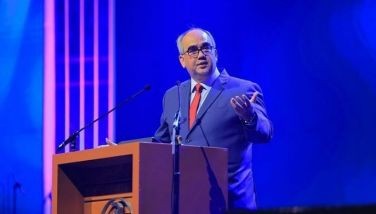Gateways

Visiting Seoul the other weekend meant going through Incheon International Airport.
Taking off from the NAIA and then landing in Incheon can be depressing when you consider that only a few decades ago, Koreans were visiting our country to study the construction of expressways and Roxas Boulevard.
Korea’s premier gateway, built on land reclaimed between two islands, is connected to Seoul by the Incheon International Airport Expressway – a drive of 50 minutes to an hour, depending on the traffic.
Incheon International opened in early 2001 and has supplanted Singapore’s Changi International Airport for seven years in a row now as the world’s best.
The recognition is conferred by the Airports Council International. ACI is not a travel bloggers’ group; it is the industry’s non-profit organization, with 580 members running 1,650 airports in 179 countries and territories.
Incheon airport has a spa, golf course, private sleeping rooms, casino and ice-skating rink. It has a Museum of Korean Culture and indoor gardens.
I didn’t time the processing at immigration and customs upon my arrival and departure: it’s supposed to be no more than 12 and 16 minutes, respectively, according to a write-up on the airport. But the write-up seems accurate: upon arrival, I breezed through immigration (including fingerprinting), retrieved my checked-in luggage from one of many carousels and cleared customs it seemed in about 10 minutes.
Departure was just as easy. I checked in online at the airport and then dropped off my luggage (about four minutes in all), went through security check and immigration (no departure card to fill out, no airport terminal fee) in about five minutes, and I was done.
As in most major cities, there were hotel shuttles to Seoul, a “limousine bus” service and a railway connecting to subway lines to the city center and the secondary Gimpo airport. Taxis are reserved at the arrival area, with only three fixed fares depending on the zone in Seoul. The dispatcher handed me the taxi company’s business card, with the fare written on it, and with instructions to me not to give a tip.
My cab was a black-and-yellow-orange Hyundai Sonata. Koreans are loyal to their own brands, which has been a boon to their local industries. I spotted a few BMWs, Audis and Lexus cars, but the streets of Seoul continue to teem with Korean brands, with Hyundai’s Equus – Korea’s affordable alternative to the Mercedes Benz – quite popular.
As we drove across a bridge over the Han River, the taxi driver told me that the bridge was the scene of much bloodshed during the Korean War.
How South Korea managed to achieve such progress after the devastation of that war has always amazed me. And the progress continues, even if the two Koreas remain on war footing.
* * *
Airports and road networks often serve as a good gauge of a country’s level of development and future economic prospects. They are certainly a good gauge of the Philippines’ level of development.
It is no coincidence that several of the world’s best airports, as rated by ACI and the International Air Transport Association or IATA, are in Asia.
Our neighbors have been expanding and continually upgrading their airports – both the main gateways and secondary ones. They improve not only airport facilities but also supporting infrastructure and services: roads connecting to city centers and other airports, transportation, even entertainment and shopping.
Korea started building Incheon in 1992. Actual construction took eight years. Incheon can accommodate the world’s largest commercial aircraft, the Airbus A380.
In our case, one of the Asian carriers may soon use Clark International Airport for its A380s. The tarmac of the former US air base is sturdier than the one at the NAIA. When the US base was still in operation, Clark could handle a Lockheed C-5 Galaxy, the world’s largest military cargo plane; the NAIA still can’t.
The Incheon airport management and Korean giant Hanjin Corp. (also the parent company of flag carrier Korean Air) will operate a medical center near Incheon International, catering mainly to foreign medical tourists.
Another plus for foreign visitors in Korea is the tax refund, conveniently processed right at the departure line in Incheon.
Such refunds are common in many countries with value-added tax. A Singaporean at the East-West Center’s International Media Conference in Seoul, where I was a speaker in two sessions, told me he liked the Philippines a lot and he thought it was truly “more fun” in our country. But he hates the 30 percent VAT on hotel room rates (and he’s stayed in many hotels all over the Philippines). The room VAT is not refunded. He also hates the airport terminal fee, which is increasingly becoming unique to the Philippines.
At least he doesn’t have to go to the NAIA pay parking area during his visits, and so far he’s had no unsavory experience in Philippine taxis.
Upon my return the usual chaos greeted me at the NAIA parking area. After I had transferred my luggage from the airport cart to my car, a guy walked up to me and pulled the cart, asking for a tip for his effort. There have been worse complaints about that parking area.
It doesn’t take rocket science to end that chaos and make our premier gateway better. Yet it looks like we still have a long wait to see any significant improvement.
- Latest
- Trending























